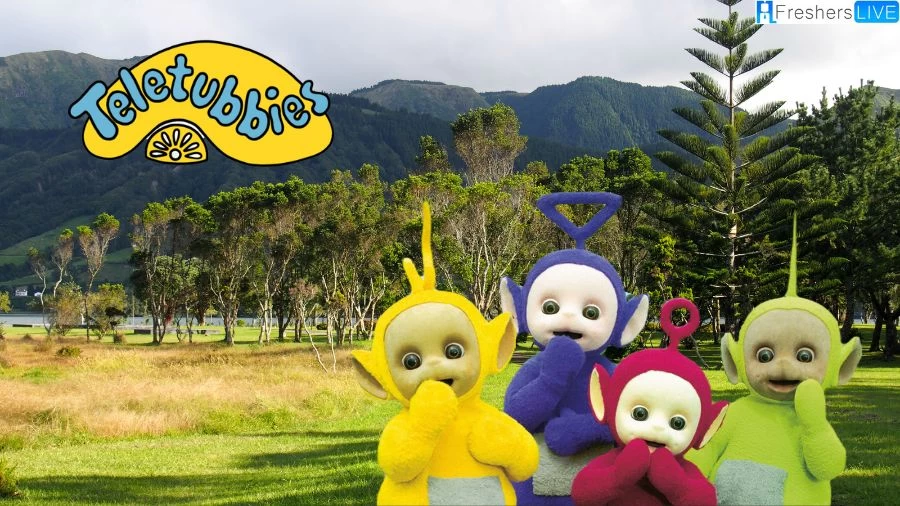Physical Address
304 North Cardinal St.
Dorchester Center, MA 02124
Physical Address
304 North Cardinal St.
Dorchester Center, MA 02124

Contents
No, Teletubbies is not based on a true story. Teletubbies is a British children’s television series that was created for preschool-aged children. The show features four colorful characters named Tinky Winky, Dipsy, Laa-Laa, and Po, who live in a fictional land called Teletubbyland.
The show is known for its simplicity, bright colors, and gentle storytelling, designed to entertain and educate young children. It is purely a fictional and imaginative creation for the purpose of children’s entertainment, and it is not based on real events or individuals.
There is a claim circulating that suggests Teletubbies is based on a dark asylum story from 1955. According to this narrative, the show is said to depict the tragic events of mentally disabled children in an institute in Bulgaria. Allegedly, these children were subjected to harsh conditions, confined in dark and cold rooms, and neglected by the caretakers, leading to their untimely and dreadful demise.
It is proposed that the four main characters in Teletubbies are symbolic representations of these unfortunate children. However, it’s essential to note that there is no official evidence or credible source to support this theory, and Teletubbies is primarily known as a light-hearted children’s television series created for preschool-aged viewers.
The history behind Teletubbies dates back to the late 1990s when its co-creators, Andrew Davenport and Anne Wood, were commissioned by the BBC to develop a television show for preschool-aged children. Davenport’s fascination with how technological advancements of that era were influencing children’s experiences played a significant role in shaping the concept of Teletubbies.
The show introduced four main characters known as Teletubbies. These characters were portrayed as large, dumpy, and semi-sentient bean bags, each with a unique color and an antenna on their heads. Additionally, each Teletubby had a television screen on their stomach.
Teletubbies was designed to captivate the young audience with its visually vibrant and whimsical technicolor world. The characters lived in a distinctive, idyllic landscape known as Teletubbyland, which featured rolling hills and peculiar elements like the baby sun and the windmill.
Throughout the series, the Teletubbies engaged in various playful activities learned simple concepts, and interacted with magical elements, such as the Teletubby Custard Machine and the Noo-Noo, a sentient vacuum cleaner.
The show’s unique format and use of repetition aimed to be both entertaining and educational for preschoolers. It encouraged early learning, language development, and imaginative play, making it a beloved and influential series in early childhood programming.
Teletubbies, an iconic children’s television series, gained widespread recognition in popular culture, particularly for its distinctive and memorable features. One of its most recognizable traits is the uniquely shaped antenna that protrudes from the head of each character, adding to its endearing charm. These lovable characters were intentionally designed to bear resemblance to toddlers, with their childlike proportions and innocent expressions.
Communication in Teletubbyland, the fictional world where the Teletubbies reside, is a delightful blend of playful gibberish, fostering a sense of fun and engagement for the young audience. Their signature greeting, “Teletubbies say ‘Eh-oh!'”, became an endearing catchphrase synonymous with the show’s warm and inviting atmosphere.
The enchanting world of Teletubbies swiftly captured the hearts of children and parents alike, leading to its rapid commercial success not only in Britain but also across the globe. The series’ appeal transcended cultural boundaries, resonating with young viewers worldwide.
Teletubbies’ innovative approach to early childhood education and entertainment made it a beloved and enduring part of children’s programming history. Its delightful blend of imaginative play, repetitive patterns, and colorful visuals created a captivating and interactive experience for young minds.
As the Teletubbies delighted children with their playful antics, they became beloved characters in the hearts of millions, leaving a lasting impact on generations of young viewers and solidifying their place as one of the most cherished and iconic children’s shows of all time.
Teletubbies, a beloved children’s television series, was co-created by Anne Wood and Andrew Davenport. The show was developed by Ragdoll Productions for the original series and later by Darrall Macqueen for the revival series. It featured a talented cast, including Dave Thompson, Simon Shelton, John Simmit, Nikky Smedley, Pui Fan Lee, and more.
The show aired on BBC Two for the original series and CBeebies for the revival series, entertaining young audiences with its delightful characters and the iconic opening theme, “Teletubbies say ‘Eh-oh!'” The original series comprised five seasons, each with a runtime of 25 minutes, while the revival series had ten seasons, with episodes running for 15 minutes.
Throughout its successful run, the show amassed a total of 485 episodes, leaving a lasting legacy in children’s programming history
TRENDING
Disclaimer: The above information is for general informational purposes only. All information on the Site is provided in good faith, however we make no representation or warranty of any kind, express or implied, regarding the accuracy, adequacy, validity, reliability, availability or completeness of any information on the Site.